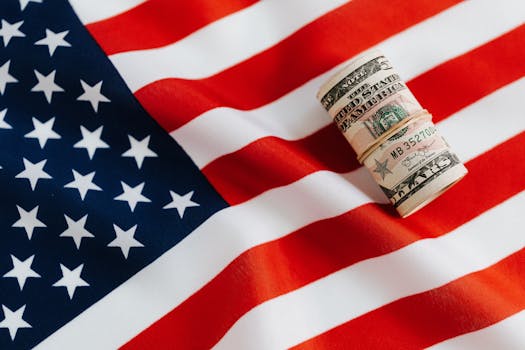Companies with the best and the worst fundamentals.
Lists of companies in NSE500 with the best and the worst fundamentals...
Lists of companies in NSE500 with the best and the worst fundamentals...
List of the latest important filings for NSE500....
Lists of companies in NSE500 with the best and the worst technicals...

This in-depth analysis delves into the upcoming Q3 earnings reports from major...

The article examines the challenges faced by the Federal Reserve when critical...

The article examines the profound effects of the U.S. government shutdown on...

The ongoing political impasse in the United States has significant ramifications for the economy, particularly in times of uncertainty and fluctuating market dynamics. A government shutdown, an outcome of political gridlock, can adversely affect macro growth, consumer and business sentiment, and the federal workforce, all while setting troubling precedents for long-term fiscal stability.
The U.S. economy, valued at approximately $30.49 trillion as of April 2025, relies on steady government operations to ensure smooth financial activities. The potential for a government shutdown threatens to disrupt public services, federal contracts, and economic activity. In recent years, shutdowns have cost the economy significantly. For instance, the 35-day shutdown in late 2018 and early 2019 was estimated to have cost the U.S. economy about $11 billion, as per the Congressional Budget Office.
As reported by the latest data, by July 2025, the Gross Domestic Product has reached $30,042.11 billion, reflecting the essential need for a functioning government to support economic growth. Any reduction in government services or delays in contracting can slow down growth and impact overall economic performance.
Consumer sentiment plays a critical role in economic stability. According to the University of Michigan’s Consumer Sentiment Index, consumer sentiment recently reached 58.2 in August 2025, down from 61.7 in July. This decrease indicates growing unease among consumers regarding future economic conditions, fueled partially by political uncertainty.
Business sentiment is equally concerning; many companies rely on clear government policies to navigate their operational strategies. With over 7.2 million job openings reported as of August 2025, companies may hesitate to hire new employees due to uncertainty around regulations and fiscal policy instigated by a political impasse. Additionally, the S&P/Case-Shiller U.S. National Home Price Index showed fluctuations, revealing a potential decrease in consumer confidence in the housing market, where home values are essential for wealth perception.
A government shutdown directly impacts federal employees, with an estimated 2 million federal workers facing furloughs. The 2023 shutdown threats are reminiscent of the previous episodes, causing anxiety among public sector employees regarding pay and job security. The unemployment rate as of August 2025 has settled at 4.3%, while the Labor Force Participation Rate was recorded at 62.3%. With such critical metrics at play, federal employees directly bear the brunt of the instability.
Furloughed employees often find themselves struggling to meet financial obligations during shutdowns, contributing to a ripple effect across the economy. The impact extends beyond direct payroll, affecting local economies where federal employees spend their income, further eroding job growth and economic stability.
The uncertainty caused by political impasses raises concerns over long-term fiscal health. The effective federal funds rate was reported at 4.22% in September 2025, indicative of a tightening monetary policy that can stifle growth if sustained. Moreover, increased borrowing costs could lead to higher federal deficits, as the government relies on debt financing to operate when revenues are interrupted.
Continuing shutdowns can also erode trust in public institutions. As markets react negatively, the viability of stimulating economic policies may diminish, making it increasingly difficult for policymakers to restore confidence. When the economy slows, so do revenues from taxes, furthering the cycle of deficit spending and political gridlock.
The financial markets are particularly susceptible to the economic uncertainties caused by a government shutdown. As seen with crude oil prices, which decreased to $66.87 per barrel in late September 2025, volatility in essential commodities reflects shifting investor sentiments. The market's reaction signals broader concerns regarding economic sustainability and preparedness for future challenges.
Moreover, high rates on Treasury bonds, such as the 10-Year Treasury Constant Maturity Rate at 4.10%, showcase investor risk aversion in turbulent times. Rates at historically high levels can discourage borrowing, stifling business expansion and household investment—both crucial to long-term growth.
Addressing these challenges require a concerted effort from policymakers to reduce partisanship and restore stability in governance. Political instability directly impacts economic performances and collective confidence, warranting a serious dialogue among leaders to prevent further disruption.

The partnership between OpenAI, Samsung, and SK Hynix signifies a transformative moment...

An analysis of the U.S. stock market's record highs in light of...